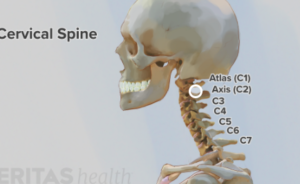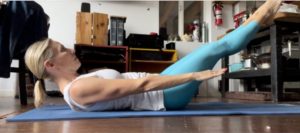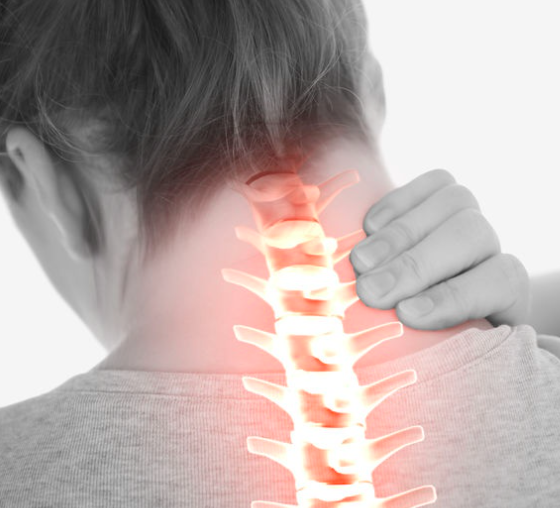I’ve been teaching Pilates for a long, long time. I love it and I know classical Pilates is the best way to get and stay in shape. I’ve had amazing teachers over the years. However, about a decade into my teaching career I started noticing I wasn’t getting the results I wanted. It seemed like parts of my body were actually getting weaker and others were in pain, namely my neck. What the heck?
It was then I started questioning things. What was happening? When I started training and teaching in my twenties, I followed my teachers blindly, more parroting them than thinking for myself. Over the last decade I’ve studied differently and tried to get to the bottom of why my neck was so painful, stiff and on the verge of arthritis. Unfortunately, my pain and weaknesses were due to the unhealthy positions I have getting into over and over and over, week after week after month after year. If you did these actions once a week, here and there, you’d be fine, but as an instructor and a practitioner, I got injured.

Here’s me in 2000, doing The Star to my hearts content. Oh, to be young again. I can still do this though!
These three cues I’ve used a million times, probably even on film. Our words matter. All I can say, in Maya Angelou’s words, “When you know better, you do better.” Now I know better and I teach better and healthier actions to myself and to my clients.
There are more than three cues I wish would go away. I already wrote about “Squeeze the Seat” here. The others are…
1) “Bring your chin to your chest“
Your neck or cervical spine is pretty darn important. It not only holds your head up, it also contains your trachea and protects your spinal cord! You don’t want to mess with the ability to breathe or move. Pressing your chin into your chest and looking into your navel while exercising is terrible for your neck! In a nutshell, it crushes the trachea while over-stretching the back of the neck and compressing the front side of the cervical vertebrae. Ouch.
I taught and practiced this cue for many years and have the stenosis and pain to prove it. You can do anything when you’re young, but the repetitive, damaging action of bringing your heavy head into extreme forward flexion will take its toll. Why put such a ridiculous amount of pressure on the tiny cervical vertebrae, disks, muscles and ligaments? There’s no good reason.

C1, called the Atlas, holds up your skull. C2, known as the Axis is for rotation so you can use your eyes and look in different directions. C1 and C2 are shaped differently and have no spinous processes, whereas C3-7 look more like regular vertebrae. The disks in the cervical vertebrae are more vulnerable than the thoracic and lumbar ones, so even more important to protect them.
We have ligaments in our neck that stabilize the bones and ligaments don’t stretch! There’s one called the Transverse ligament, whose job is to keep C1 from sliding forward. When you put your neck into extreme flexion by bringing your chin to your chest, it forces C1 to slide forward and that’s not good.
What to do instead:
When lying on your back, have the weight in the center back of your head, your chin up to the ceiling to keep the natural curve of the cervical spine. I was taught to flatten the neck on the mat and look towards the feet. You want to put the natural curve back into your neck by keeping the gaze up, not flatten it out. Most of us already have a forward head posture from modern life staring at screens. Those muscles in the back of your neck are already over-stretched. There’s no good reason to keep stretching the back of the neck and flattening it out.
In an exercise like the 100, curl your upper body up and lengthen through the crown of your head so you’re lengthening your spine, including the cervical spine, which strengthens your neck muscles instead of over-stretching and straining them. Your gaze will be above the knees, not into your navel. Same in the Series of 5, the neck will be in light flexion but not such an extreme position. Keep a long spine and reach out of the crown of your head.

A good neck position while the upper body is lifted. Long neck.
A gentler and healthier way to lightly stretch the neck is to turn it side to side. Then, gently tilt your ear towards the shoulder without force or strain. And by bringing your head backwards a little and tipping your chin into your throat for a gentle stretch of the back of your neck.
My neck injury wasn’t caused only from doing incorrect actions in Pilates. It also, most likely, came from teaching Pilates. All the hours of standing up and looking down at the person on the reformer, mat or Cadillac. And, my early years of yoga, doing things like shoulder stands til the cows came home didn’t help.
It seems like 99% of the population has forward head posture or “tech neck.” It’s an epidemic! Please, young people (and old people), stop looking down at your phones all day! It hurts me to watch this. I’m on my kids every minute to drill this into their little cervical spines. And we certainly don’t need to practice more forward head posture in Pilates. Nowadays, I’m very mindful of the position of my neck and head while teaching, exercising and staring at screens and I’m getting better.
2) “Soften Your Knees”
Only if you want weak quadriceps and hamstrings! This is another cue I used to say a lot without understanding why I was saying it. Why should we straighten our legs and lock the knees? To get strong, balanced legs. The muscles in the legs work together and should co-contract. Soft knees = mush.
When you’re young, you don’t always notice what’s going on in the body because you can do anything and recover quickly. Not so much when you get older. I started noticing that my legs seemed to be getting weaker. How was this happening? I was doing tons of pilates workouts. I was following directions – “Get out of your hip flexors!” “Don’t use your quads” “Just use your Powerhouse.” What does that even mean? Why shouldn’t I use my legs? If Pilates “develops the body uniformly,” according to Joseph Pilates, why would I try to relax huge parts of it for big chunks of the workout?
Some people have knocked or hyperextended knees that go beyond straight so their legs bend backwards. Many dancers hyperextend, which is where this cue probably took hold. “Don’t straighten! Soften the knees. Use your Powerhouse” For these people their legs won’t feel straight to them because they’re not going backwards, but they should still straighten the leg by muscularly locking the knee, meaning pulling the kneecap up, not jamming it back and down.
By co-contracting the quad and hamstring you will be able to muscularly straighten your leg. Over time these actions will build strong legs. It’s hard work. Straighten the legs or bend the knees. Soft knees? Nope.
3) “Pull Your Ribs Down or In”
I think this also came from ballet since so many positions in ballet feature an arched upper back with splayed ribs. Pull the ribs in came from attempting to pull the thoracic spine back into neutral. But it got out of control to where teachers say it nonstop. Pulling the ribs in and down, knitting them together so they don’t move, just constricts the breath and seriously weakens the diaphragm.
You don’t want splayed ribs either. If the client is arching the upper back, ribs popping out – like in the roll up, when the arms go back overhead too far, cue them to keep their pelvis level and maintain the natural curves of the spine while taking the arms not as far back.
In the arm springs, when they pull the springs down and the chest pops out. Cue the lower abs and breathe into the back of the ribs to bring your spine into its natural curves. There’s no knitting of the ribs involved. Look at Joseph Pilates! Does he look like he’s concerned with pulling his ribs tightly in? He wants to breathe! And his legs are straight, knees pulled up and locked. (And check out his hands. He’s gripping the bar with a fist, which strengthens the hands and the whole arm. No long fingers! That’s for ballet. That’s another post.)

I don’t think you’re bad or a bad teacher if you say these cues. I used them for years. and caught myself saying “pull your chin to your chest” yesterday. I meant “lift your head up” but our words matter and clients take us literally. I think as teachers of movement it’s our responsibility to learn about how the body actually works. As Pilates teachers we should spend time studying anatomy and physiology to learn how the body gets stronger and more malleable and how it doesn’t.
I’m not declaring myself an expert (yet) but I do spend a lot of time trying to learn. I read. I ask questions to my doctors, physical therapists and chiropractors. I take workshops from people who really know the body, not just dancers who learned from other dancers using intuition instead of science. I don’t have any bad feelings or judgments towards dance. I was a dancer for the first half of my life. I love dance. But we’re not teaching dance.
We should be teaching healthy movement to make ourselves and our clients stronger and more agile. We should be helping to relieve pain, not give more! We must use critical thinking. Ask questions. After several years of doubt and shame but no action but pain and budding weakness in my body, then the last seven years of trying to learn a better way, I know I’m on the right track. Always ask why. Why are we doing this? How is this helping me? If a movement doesn’t feel right and you’re in pain, it’s okay to ask for answers. I certainly don’t have all the answers but when asked I will try to find out.

